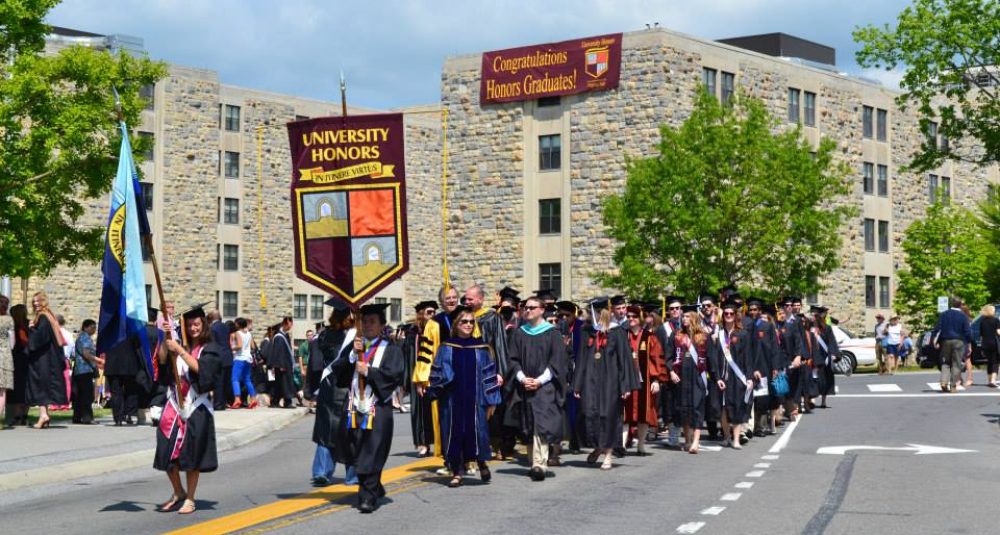The title of New Yorker writer John Cassidy’s insightful article in the September 7 issue of the magazine is College Calculus–What Is the Real Value of a College Education? The use of the word “calculus” is more than a nod to the subject many college students dread; it is also an accurate term for the subtlety and complexity facing students and parents as they try to sort out what makes the increasingly expensive college experience worthwhile.
Cassidy describes the evolution of concepts that have defined the value of a college degree. Once upon a time a degree, in almost any subject, from almost any college, was a “signal” of achievement, the degree itself providing sufficient entree to a broad range of vocations as well as to widespread respect in society.
Then came the concept of “human capital,” a term defining the instrumental value of a degree. The more one learned in a discipline with vocational promise, the more one’s “capital” increased.
But how does either term apply now in a nation where about half of the citizens aged 25 to 34 possess some form of college credential? The “signal,” once loud and clear, has become attenuated as it has spread. And even the idea of human capital, still ascendant, is subject to the whims of a world economy in which today’s dream vocation is tomorrow’s robotic solution. Added to this is the demand by employers for the lowest cost employees, with the most recent take on what is sure to be a passing bit of expertise. We want you now, they say, knowing that once your moment has passed–or your pay has risen–you will be gone.
The signal that the degree now conveys for all too many graduates is that they are likely to be more employable than people without degrees for jobs that in fact…do not require a degree.
Are there exceptions? Yes, but they are reassuring to only a few. Graduates of the most prestigious colleges still carry a strong signal to employers and the world. Is this because the graduates are in fact better educated, more articulate–or just more efficient cognitive machines?
Citing the work of Lauren Rivera of the Kellogg School of Management at Northwestern, Cassidy writes that the “recruiters didn’t pay much attention to things like grades and majors.” Instead, as Rivera says, “It was not the content of education that elite employers valued but rather its prestige.”
So prestige alone works if a student can get into a college that rejects 80-95 percent of its applicants, with about three-fourths of those rejected applicants actually possessing the requisite ability to succeed at those institutions. And this at a time when many colleges gin up the number of applicants to they will look more selective by rejecting almost all of them.
No wonder many parents and students opt for the seemingly safer “human capital” approach. Cassidy writes that Peter Cappelli of Penn’s Wharton School is skeptical about this concept of value, too, his work showing that only about a fifth of recent STEM grads find jobs in their fields.
“The evidence for recent grads suggests clearly that there is no overall shortage of STEM jobs,” Cappelli said. (Here we should add that most engineering grads are, for the time being, much more in demand than “overall” STEM degree holders, many of whom have degrees in biological sciences.)
Faced with this situation, even students among “the talented tenth” need to plan very carefully. With no pretense of capturing the calculus of Cassidy’s informative piece, we argue that students should develop what we will call, inelegantly, “differentiators.” Unable to win the lottery of gaining admission to a super prestigious college, where the signals are a legacy to grads who may or may not be individually deserving, students can still develop a formula for developing real, lasting skills and knowledge that might make them more balanced and successful in their lives. In the end, the seeming disadvantage of not gaining the automatic cred of a degree from Harvard, Berkeley, Stanford, MIT, Virginia, or Yale could turn into an array of advantages, all of them earned.
- Go to the best public or private college that you can afford, really afford.
- If there is an honors college or extensive honors program, apply.
- If you are an engineering or tech major, regard the liberal arts, sciences, and social sciences as critical elements in your development.
- If you are a humanities or social/behavioral science major, regard math and the sciences as critical elements in your development.
- Give serious thought to pursuing a minor that contributes to your personal growth or provides more career potential.
- Take advantage of seminars and discussions. Learn to think about what you say, understand and accept criticism, and anticipate arguments against your own.
- Pursue an honors option that includes a thesis or a capstone project. It’s more work, but that’s the point. They are hard evidence of persistence, depth, and sophistication. They are “signals.”
At the end of his article, Cassidy quotes Cappelli, the Wharton scholar, and the quote is worth remembering:
“To be clear, the idea is not that there will be a big financial payoff to a liberal arts degree,” Cappelli writes. “It is that there is no guarantee of a payoff from very practical, work-based degrees either, yet that is all those degrees promise. For liberal arts, the claim is different and seems more accurate, that it will enrich your life and provide lessons that extend beyond any individual job. There are centuries of experience providing support for that notion.”
Honors News is a regular (not always daily) update, in brief, of recent news from honors colleges/programs and from the world of higher ed. Occasionally, a bit of opinion enters the discussion. These brief posts are by John Willingham, unless otherwise noted.

